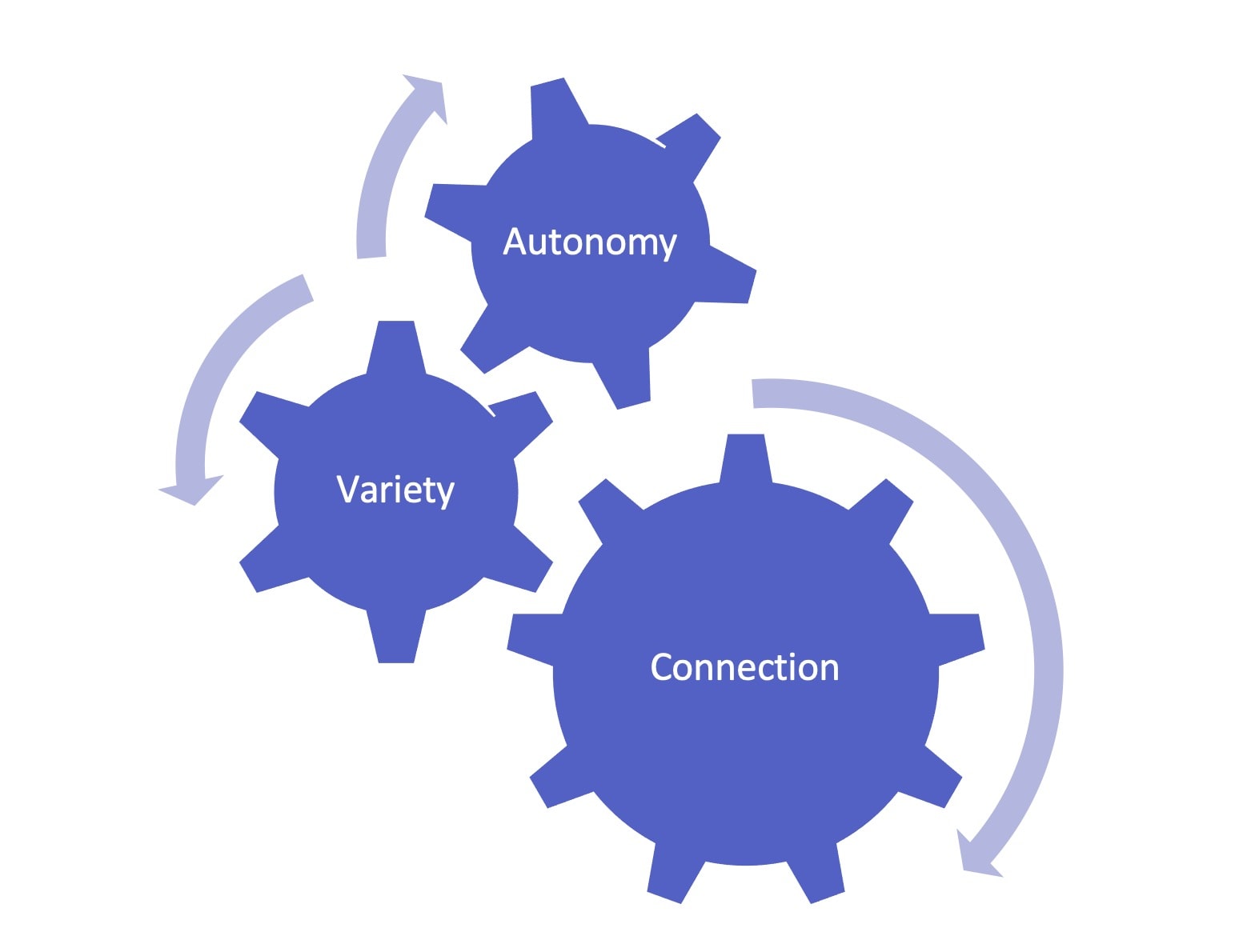“Preventing employee burnout requires three things: giving your employees autonomy, creating variety in their work, and helping them to stay connected to other humans.”
–Phil Symchych
Your employees, especially those working from home while attempting to educate their young children during the day, are at risk of burnout. They have lots to do and not much is within their direct control. And, they’re probably not getting much or any social interaction with other adults.
When I participated in triathlons many years ago, I often trained six days per week, usually with a friend. However, every day the workout was different. This allowed muscles to rest between workouts and gave my brain variety. The variety was important for both physical and mental performance. Working out with a friend let us motivate and support each other, including drafting while on 40 km bike rides. Another important factor: I controlled the workouts.
Burnout is not just about physical exhaustion. It’s about a gradual physical and emotional drain in overall energy and enthusiasm for life.
From my experience of working with entrepreneurs and leaders who routinely worked too many hours and too many days each week, I was amazed they weren’t burning out quickly. It was more of a slow burn. That’s probably because the purpose of their work—to build their business and their independence—energized and recharged them.
Entrepreneurs are like solar panels on a sunny day: constantly generating energy. However, for humans, always being on is not sustainable. I’ve seen lots of examples of bad decisions and terrible results from entrepreneurs who didn’t think they were burnt out when they were.
From a business perspective, I’ve also seen and helped to implement effective strategies for getting people back on track. There are three key preventive factors for burnout: autonomy, variety, and connection.

Figure 85.1: Three factors to prevent burnout.
Autonomy means employees control the task, the timing, and the technique. If your employees control what they work on, when, and most importantly, how (within your systems and standards of quality, of course), then they can reduce their chances of burnout.
If your employees don’t have autonomy, then you need to maximize the other factors. Ensure they have variety in their workflow. Watch for uncommon or minor errors to see if they need more variety in their workflow.
The final factor is the most important one. People need to connect with people. We’re social creatures but working from home is like being confined to our own cages.
But our cages, er, homes, weren’t designed for 24/7 work, school, gym, zoom, and Netflix. What is the optimal environment for human productivity during a pandemic?
As leaders, we need to be proactive and give our employees much more than just a laptop so they can work from home. We need to help them thrive while working from home.
What are you doing to stay connected with your employees and help them connect with each other when they’re working from home?
Here is some useful information from the Mayo Clinic on job burnout.
Full speed ahead!
Thanks for reading.

